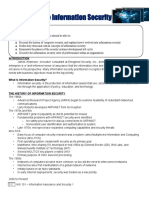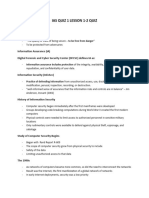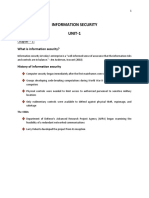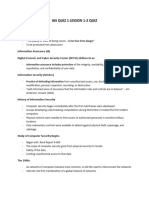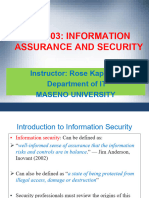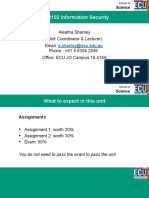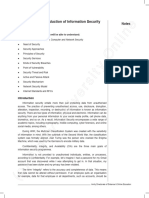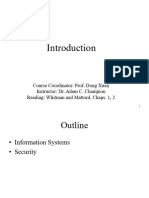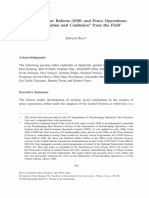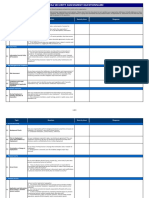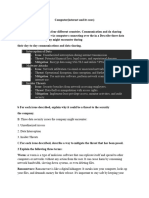0% found this document useful (0 votes)
131 views14 pagesIntroduction to Information Security
This document provides an overview of Module 1 of a study guide on information security. It covers the history of computer security from World War 2 to modern times. It also defines key terms like information security, outlines the critical characteristics of information like confidentiality and integrity, and describes the learning objectives which are to understand the definition of information security, comprehend its history, understand key terms and concepts, outline the security system development life cycle, and understand information security roles in an organization.
Uploaded by
Justine DGCopyright
© © All Rights Reserved
We take content rights seriously. If you suspect this is your content, claim it here.
Available Formats
Download as PDF, TXT or read online on Scribd
0% found this document useful (0 votes)
131 views14 pagesIntroduction to Information Security
This document provides an overview of Module 1 of a study guide on information security. It covers the history of computer security from World War 2 to modern times. It also defines key terms like information security, outlines the critical characteristics of information like confidentiality and integrity, and describes the learning objectives which are to understand the definition of information security, comprehend its history, understand key terms and concepts, outline the security system development life cycle, and understand information security roles in an organization.
Uploaded by
Justine DGCopyright
© © All Rights Reserved
We take content rights seriously. If you suspect this is your content, claim it here.
Available Formats
Download as PDF, TXT or read online on Scribd
/ 14









